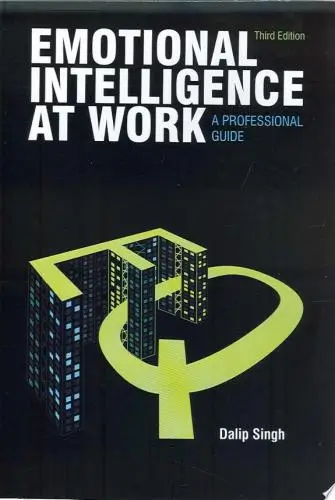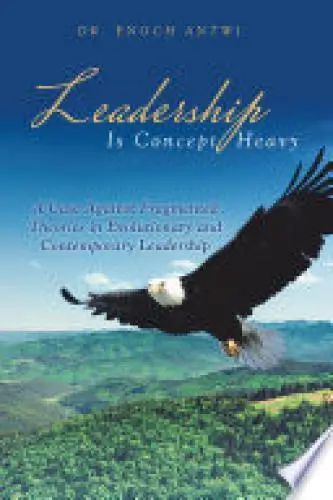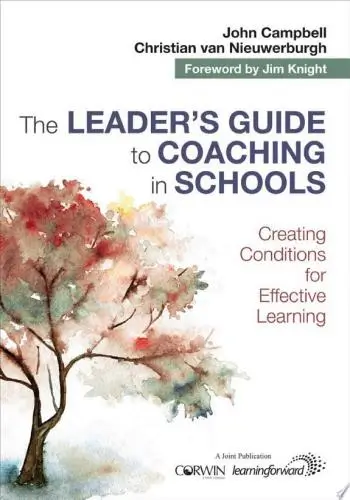
Creativity, Inc.
Overcoming the Unseen Forces That Stand in the Way of True Inspiration
What's it about?
Creativity, Inc. takes you behind the scenes of Pixar Animation Studios with co-founder Ed Catmull, offering valuable insights on fostering a creative culture. Learn about the importance of embracing failure, promoting open communication, and nurturing a supportive environment for innovation. Discover how to unleash your team's creativity and achieve success in any industry.
About the Author
Ed Catmull is a computer scientist, co-founder of Pixar Animation Studios, and author of "Creativity, Inc." He is known for his innovative leadership style and emphasis on fostering creativity and collaboration in the workplace. Catmull's work explores the intersection of technology, art, and storytelling, offering valuable insights for anyone looking to unleash their creative potential and build successful teams in any industry.
10 Key Ideas of Creativity, Inc.
Foster a Culture of Candor and Transparency
Creating an environment where team members feel comfortable sharing their thoughts, ideas, and critiques openly leads to innovative solutions and helps identify issues before they become problematic.
Encouraging honest feedback and discussions prevents the buildup of hidden agendas and ensures that the best ideas are heard and considered, regardless of their source.
This approach requires leaders to model vulnerability and actively listen, creating a safe space for genuine dialogue.
Learn DeeperLead by Example: As a leader or team member, make the first move by sharing your own thoughts, ideas, and constructive criticisms openly. This sets a precedent and encourages others to do the same.
Create Regular Feedback Sessions: Schedule regular meetings or sessions dedicated solely to sharing feedback among team members. This could be in the form of weekly roundtables or monthly review meetings where everyone is encouraged to speak up.
Establish Anonymous Feedback Channels: For those who might not feel comfortable sharing openly at first, provide anonymous feedback mechanisms. This could be a suggestion box or an online form. It's a step towards building trust and encouraging more open communication over time.
Acknowledge and Act on Feedback: When feedback is given, acknowledge it publicly and take action where necessary. This shows that you value honesty and are committed to making improvements based on the team's input.
Promote a 'No Blame' Culture: Make it clear that the goal of feedback is improvement, not punishment. Encourage a culture where mistakes are seen as opportunities to learn, not reasons to blame.
- Example
In a software development team, the project manager begins each sprint review meeting by sharing what they think could have been done better in their own management style during the sprint. This openness prompts team members to share their own observations and suggestions for improvement, leading to a more collaborative and effective workflow.
- Example
A marketing team implements an anonymous online feedback form where team members can submit their thoughts about ongoing projects and team dynamics. The team leader reviews the submissions monthly, addresses the feedback in team meetings without revealing identities, and discusses potential strategies for improvement. This method gradually increases the team's comfort level with direct communication, enhancing transparency and collaboration.
Embrace Failures as Learning Opportunities
Viewing failures not as setbacks but as essential steps in the learning process fosters resilience and encourages experimentation.
By analyzing what went wrong and why, teams can gain insights that drive future innovation.
This mindset shift requires removing the stigma associated with failure, ensuring that individuals feel supported rather than penalized for taking risks.
It's about creating a culture where continuous improvement is valued over perfection.
Learn DeeperCultivate a Safe-to-Fail Environment: Start by openly discussing failures in team meetings, highlighting what was learned rather than what went wrong. This encourages a culture where people feel safe to take risks and innovate.
Implement Reflective Practices: After a project or task, conduct a 'retrospective' meeting where the team can discuss what worked, what didn't, and how to improve. Make it a regular practice to derive lessons from every outcome, good or bad.
Encourage Small Experiments: Break down big projects into smaller, manageable experiments. This reduces the fear of failure as the stakes are lower, and it becomes easier to identify what works and what doesn’t, fostering a spirit of innovation.
Share Stories of Failure and Recovery: Leaders and team members alike should share their own experiences with failure and how they overcame it. This humanizes the process and reinforces the idea that failure is a stepping stone, not a stumbling block.
Set Aside Time for Reflection and Learning: Allocate time specifically for learning and reflection. Encourage your team to take online courses, attend workshops, and read relevant materials. Use these learnings to brainstorm new ideas and approaches.
- Example
A software development team regularly holds sprint retrospectives where they discuss the successes and failures of their last sprint. They focus on what they can learn from the failures and how they can apply these lessons to improve their next sprint.
- Example
A marketing team launches a small-scale campaign as a test before rolling out the full campaign. They analyze the results, identifying what resonated with their audience and what didn't. This approach allows them to refine their strategy with minimal risk.
Implement the 'Braintrust' Concept for Collaborative Problem Solving
The 'Braintrust' is a group of passionate, experienced individuals who come together to candidly discuss and critique projects at various stages.
This mechanism ensures that diverse perspectives are considered, enriching the creative process and enhancing problem-solving.
The key is that the Braintrust has no authority to enforce decisions, which encourages open dialogue and keeps the focus on finding the best solutions rather than navigating power dynamics.
Learn DeeperCreate Your Own Braintrust: Gather a group of trusted, experienced colleagues or friends who are not afraid to offer honest feedback. Ensure this group represents a variety of perspectives and expertise.
Establish Ground Rules for Constructive Feedback: Make it clear that the purpose of the Braintrust is to support and improve each other's work. Feedback should be specific, actionable, and delivered with respect.
Schedule Regular Meetings: Set up regular, perhaps monthly or quarterly, meetings to review projects or decisions that could benefit from diverse input. Consistency will make this a valuable part of your creative process.
Encourage Open Dialogue: Foster an environment where all members feel comfortable voicing their thoughts. Remind participants that there's no hierarchy in these discussions; the best idea wins.
Act on the Feedback: Show that the Braintrust's input is valued by acting on the feedback. This doesn't mean implementing every piece of advice but considering it seriously and explaining why certain suggestions are or aren't taken.
- Example
A software development team sets up a Braintrust to review code architecture decisions. They invite senior developers, UI/UX designers, and even a couple of end-users to ensure the software is robust, user-friendly, and meets the market needs.
- Example
An author forms a Braintrust with fellow writers, an editor, and a couple of avid readers to critique chapters of her new book. This diverse feedback helps her identify plot holes, pacing issues, and areas where character development could be enhanced.
Give Autonomy to Creative Teams
Empowering teams by giving them control over their work and decision-making processes unleashes creativity and accelerates innovation.
Autonomy fosters a sense of ownership and responsibility, motivating individuals to perform at their best.
Leaders should set clear goals and boundaries but allow the team to determine the best path to achieve those objectives.
This trust in the team’s capabilities boosts morale and drives engagement.
Learn DeeperTrust Your Team: Start by delegating tasks that you believe your team can handle without much oversight. This could be a small project or a component of a larger project. Observe how they manage these tasks and use this as a learning opportunity for both you and your team.
Set Clear Goals and Boundaries: Clearly communicate the objectives and any constraints (such as deadlines or budget limits) to your team. This ensures everyone is on the same page and knows what is expected of them.
Encourage Open Communication: Foster an environment where team members feel comfortable sharing their ideas and concerns. Regular check-ins or feedback sessions can help maintain this open line of communication.
Celebrate Autonomy: Acknowledge and celebrate when your team makes decisions or completes tasks independently. This reinforces the behavior and encourages more autonomous action in the future.
- Example
A software development team is given the autonomy to choose the best programming languages and frameworks for a new project. The leader sets the project goals, budget, and deadline but allows the team to plan the execution strategy.
- Example
A marketing team is tasked with increasing social media engagement. The team leader outlines the target metrics but lets the team decide on the content strategy and posting schedule. The team experiments with different types of content and tracks their performance, adjusting their strategy based on what works best.
Encourage Cross-Disciplinary Collaboration
Innovation thrives at the intersection of diverse fields and expertise.
Facilitating collaboration between departments and disciplines breaks down silos and brings fresh perspectives to challenges.
This approach leverages the unique strengths and viewpoints of each team member, leading to more comprehensive and creative solutions.
Regular cross-functional meetings and mixed project teams can help foster this collaborative spirit.
Learn DeeperCreate a 'Mix-It-Up' Lunch Program: Encourage employees from different departments to have lunch together once a week. This informal setting can spark unexpected conversations and ideas.
Host Regular Innovation Workshops: Organize workshops where team members from various disciplines come together to solve a predefined problem. Make it a safe space for wild ideas, and ensure every department is represented.
Implement a Rotation Program: Allow employees to spend a few days or weeks working in a different department. This not only broadens their perspective but also fosters empathy and collaboration across the organization.
Set Up Cross-Disciplinary Project Teams: For new projects, deliberately create teams that include members from different departments. This ensures a variety of viewpoints are considered right from the start.
Encourage 'Show and Tell' Meetings: Have regular meetings where employees can share interesting findings, projects, or challenges from their department. This opens up opportunities for cross-pollination of ideas.
- Example
At Pixar, employees from different departments - such as animators, writers, and technical staff - regularly collaborate in story development meetings. This ensures that storytelling is enriched with diverse perspectives, leading to more engaging and innovative films.
- Example
Google's '20% Project' encourages employees to spend 20% of their time working on projects outside their main job function. This has led to the creation of successful products like Gmail and AdSense, showcasing the power of cross-disciplinary collaboration.
Deeper knowledge. Personal growth. Unlocked.
Unlock this book's key ideas and 15M+ more. Learn with quick, impactful summaries.
Read Full SummarySign up and read for free!
Creativity, Inc. Summary: Common Questions
Experience Personalized Book Summaries, Today!
Discover a new way to gain knowledge, and save time.
Sign up for our 7-day trial now.
No Credit Card Needed

Similar Books

Emotional Intelligence at Work
Dalip Singh
Seeing the Big Picture
Kevin Cope
Leadership Is Concept Heavy
Dr. Enoch Antwi
Great by Choice
Jim Collins
The Leader′s Guide to Coaching in Schools
John Campbell
Preparing School Leaders for the 21st Century
Stephan Gerhard Huber
The E-Myth Manager
Michael E. Gerber
Leadership Is Language
L. David Marquet
Start-up Nation
Dan Senor
The Founder's Dilemmas
Noam WassermanTrending Summaries

Peak
Anders Ericsson
Never Split the Difference
Chris Voss
Smart Brevity
Jim VandeHei
The Psychology of Money
Morgan Housel
The First 90 Days
Michael D. Watkins
Atomic Habits
James Clear
Thinking, Fast and Slow
Daniel Kahneman
The Body Keeps the Score
Bessel van der Kolk M.D.
The Power of Regret
Daniel H. Pink
The Compound Effect
Darren HardyNew Books

Job Interviews For Dummies®
Joyce Lain Kennedy
Job Interviews In A Week
Alison Straw
Handbook of Career Development
Gideon Arulmani
The Art of Spending Money
Morgan Housel
$100M Offers
Alex Hormozi
A Candle for Kiri
Edna Mae Holm
Principles of Marketing, Global Edition
Gary Armstrong
Serpent Rising: The Kundalini Compendium
Neven Paar
Feeling Is the Secret
Neville Goddard
